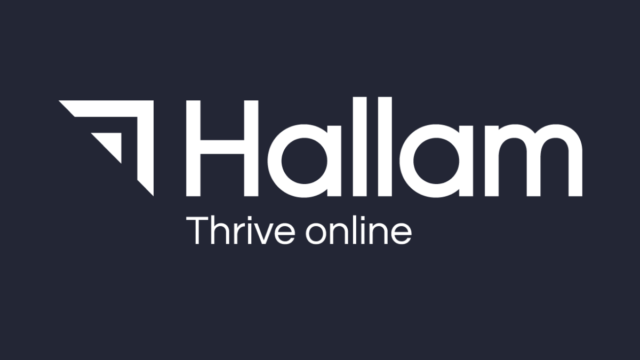This International SEO checklist outlines the 10 steps you should take when developing and optimising a website to target international territories and visitors:
- Researching potential markets
- International trade logistics
- Your website targeting strategy
- Defining your website structure
- Best practice HTML
- International keyword research
- Localising your content
- Geo-targeting
- International link building
- Leveraging international social advertising
Creating a website that’s optimised to rank well internationally is part art, part science. In this guide, we will help you develop your understanding of your target market, the technical options that are available to you, and the significant decisions you need to make before you begin the process of building or updating your website.
In brief, you want the site to rank well in the specific countries you sell to, and you want the correct pages to appear with the right messaging in the right language. That is what this guide will help you do.
Most importantly, this guide will help you create a website that creates the best possible user experience for your international visitors, and ensures you have the best opportunity for ranking well and attracting traffic.
So let’s get started. Your very first step to take is do your market research.
1. Researching potential markets
Many businesses often jump straight into forming their international SEO strategy without first analysing the data they have. It is very likely that even if you haven’t previously put any time or effort into developing your website to target more than one country, your website is still visible (albeit in a very limited capacity) in other countries.
Therefore, you may already be getting a small amount of traffic from other countries. To assess this, use Google Analytics to check your current traffic from other countries and languages.
On the “Audience” navigation on the left of your Analytics account select the Geo > Location tab to assess your current international visibility.
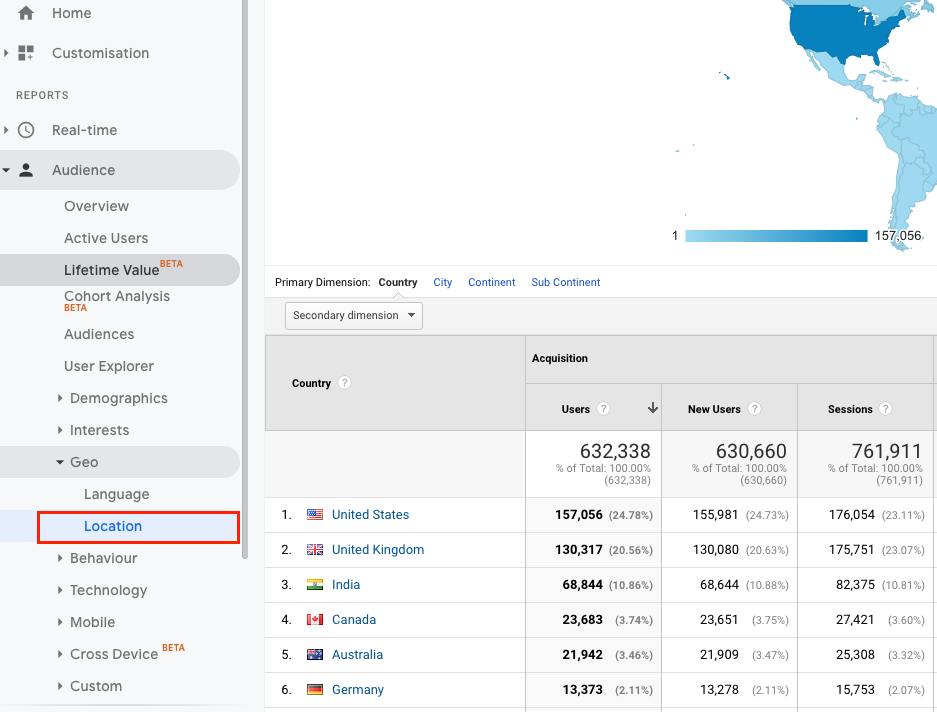
In the example above, the website in question is getting traffic from multiple regions, despite not being explicitly set up to target those countries, which is encouraging.
Your goal, of course, is to drive up the volume of traffic your website is able to capture in each country. This can be significantly increased by developing well structured, localised content for each of the regions you serve.
You can also check your current organic search visibility in other countries using Google Search Console.
Search Console lets you assess your international search visibility in the Performance section seen below.
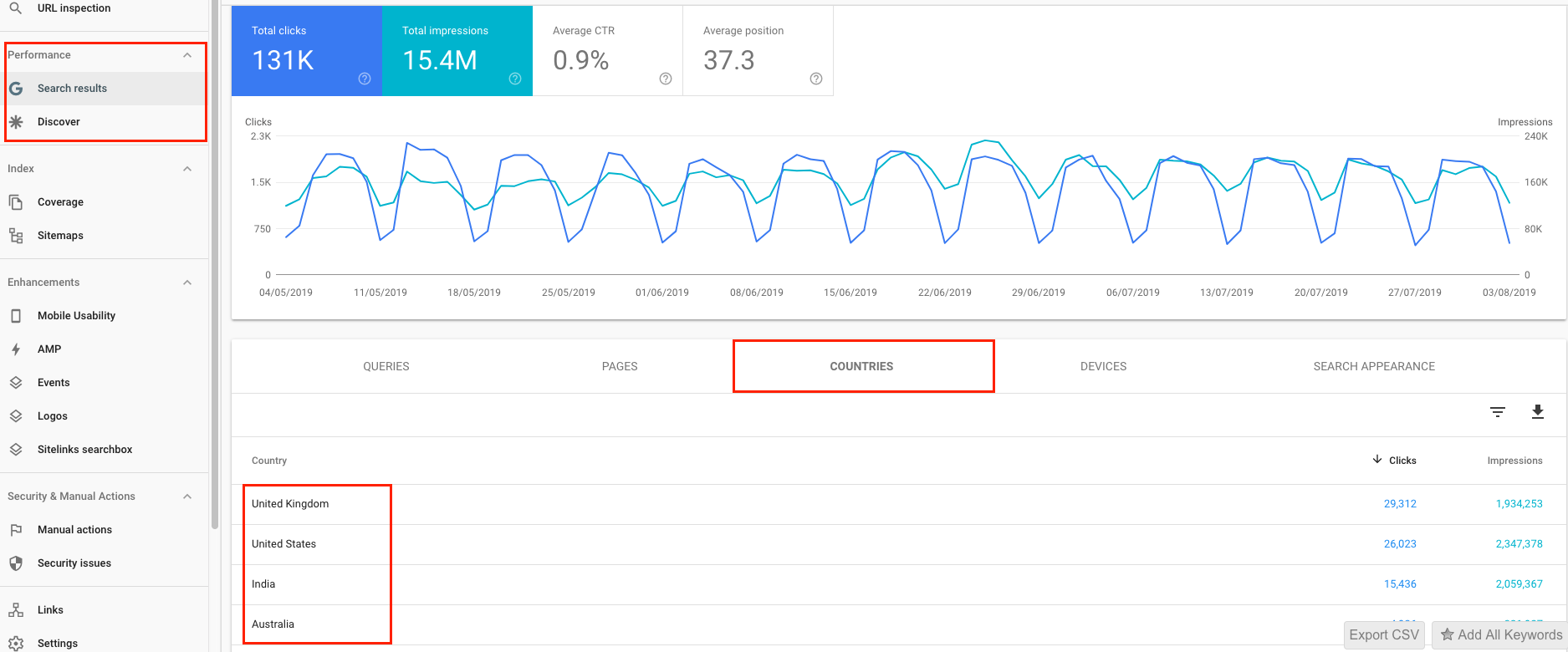
In this report, you can see Clicks, Impressions, Average CTR and Average Position by specific countries. With Search Console data now going back up to 16 months, this is a really powerful resource to use for your international SEO strategy. This data helps you understand which country your customers are based in, any potential markets and specific queries each country may have.
Perhaps certain keywords have a higher CTR in the United States and not the UK? Or, over the last 6 months you’ve seen a large rise in the number of Impressions from Germany.
The granularity Search Console data can give you around specific queries and pages is a real bonus when you are conducting analysis in your international organic visibility. Don’t be overwhelmed by the amount of data you can see – read our Google Search Console Guide to help you demystify and understand the reports you are seeing.
Another tool you can use is SEMrush which is particularly useful for researching your competitor’s international search engine visibility, as seen below:
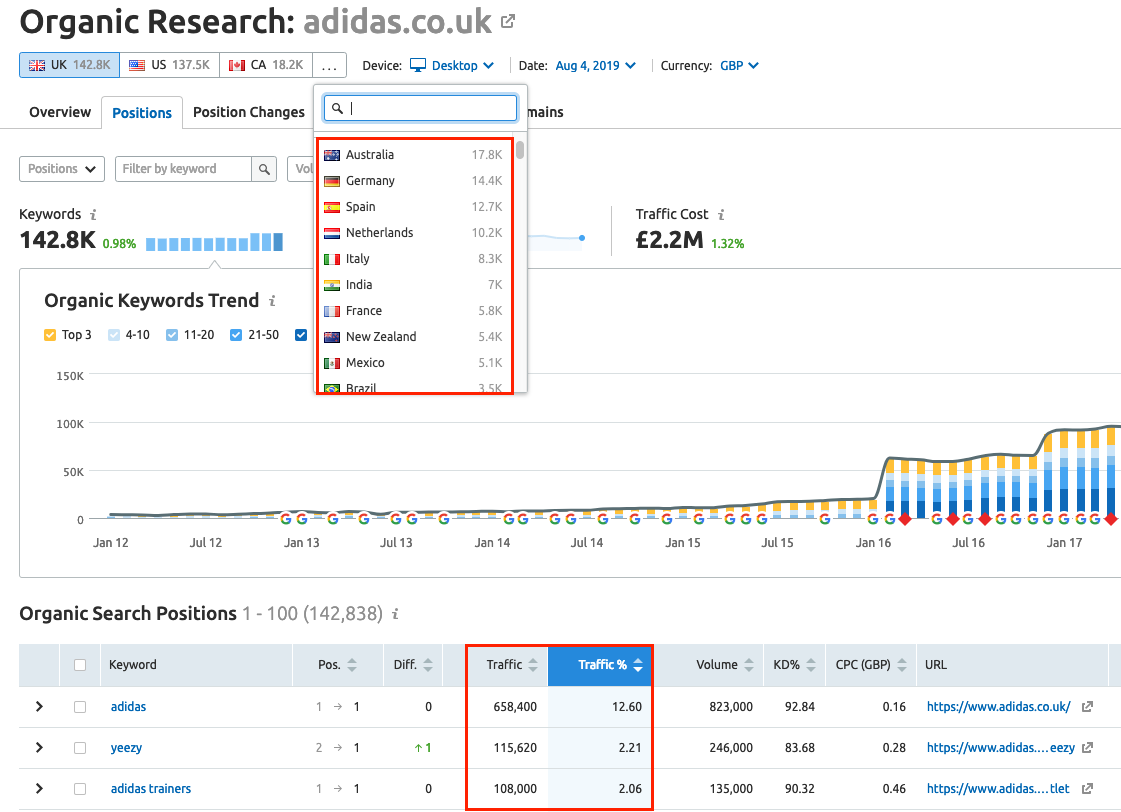
Here we can see your competitor’s international organic visibility, what their top-performing keywords are and an indication of how much traffic they could be driving to the site.
And finally, in addition to Analytics and Search Console, Google has its own tool to help you better understand potential international markets for your business, Google’s Market Finder.

Something key to remember: Google is not necessarily the main search engine in every country (although it is in a lot of them):

Above is the data for the Search Engine Market Share Worldwide. However, if we break down this data we see a different picture to the Google domination seen above. For instance, Baidu dominates the search market in China and Yandex is used in Russia and much of Eastern Europe. Knowing this will help you to know what signals you need to be sending and to which search engines, in order to get local traffic. If you’re interested in doing your own research you can see a full breakdown of each countries’ search engine market share here.
2. International trade logistics and the impact on your SEO
While this guide focuses on international SEO, we cannot ignore the fact that your business has to be geared up and ready to deliver your product or service internationally.
Readiness to trade internationally also has an impact on your SEO. Local addresses, local phone numbers, and localised content are all SEO ranking factors.
This may sound obvious, but you should ask your business the following questions.
- Do you have local phone numbers for the international territory?
- Are there physical offices in the location?
- Do you have alternative pricing for alternative currencies?
- Are there delivery plans and prices available?
- Is your business GDPR compliant?
- Does the international business comply with local law on all levels?
- Are there sales teams in place there?
- Do you have native speakers to handle calls?
- What about Privacy and Electronic Communications Regulations (PECR)?
3. Your website targeting strategy
There are three key types of global website architectures, and knowing which one is most appropriate for your business strategy will help guide your web developmnent and shape your international SEO strategy:
- Multiregional sites target users in different countries who all speak the same language. For example, your business has an English language website with different content specifically written for users in Canada, the USA, the UK, and Australia.
- Multilingual sites target users in different countries who speak different languages to users in other targeted countries. For example, your business website that has content in French, English and German. The content is the same but in different languages.
- Multiregional and multilingual sites target users in different countries who speak the same language as users in some, but not all, other targeted countries. For for example, your website has content targeting users in Switzerland, with different content written in French, German, and Italian all targeting your Swiss customers.
4. Defining your website structure
Regardless of whether you opt for a multiregional or multilingual site, the way that it is structured is absolutely essential to its potential visibility in multiple regions, yet this is an issue many webmasters overlook. It’s important to highlight that you shouldn’t mix and match these options. Pick the one that best fits your business structure and client base and stick to it.
Google advocates three main options for structuring your website on a global scale:
4.1. Country code top-level domain name (ccTLD)
The ccTLD is an effective method of geo-targeting (targeting searchers by location).
Amazon is a good example of using top level domains for the internationalisation, with different websites that enable them to use different product offerings, different pricing strategies, as well as different languages and different currencies:
- www.amazon.co.uk
- www.amzon.fr
- www.amazon.de
- www.amazon.za
This strategy works really well if you are targeting a range of countries. If you’re aiming to target a language, subdirectories or subfolders are better. See below:
Pros for choosing to use top level domain names
- Users trust that a site bearing their country domain will display information that is relevant to their country
- The strongest geo-targeting signal used by Google
- Easy separation of sites
- Server location is less relevant as a geo-targeting factor
- You can build your brand presence in each target country
Cons for choosing to use top level domain names
- Some ccTLDs have strict conditions imposed on their use and are not available to all businesses. This may be a benefit to businesses that can use the ccTLD as it reinforces trust
- More expensive
- Subject to availability
- More demands on infrastructure
- Link building may be harder as each country or language has a totally separate site, with less overall domain authority
- Has the potential to cause issues with duplicate content if geo-targeting methods are not used effectively across all domains
- Generally speaking, .com domains are thought to outrank .co.uk domains for English content
4.2. Subdomains
Using a gTLD with different subdomains to create totally separate websites.
For example, Wikipedia uses this method to organise the international versions of their content:
- https://en.wikipedia.org
- https://fr.wikipedia.org
- https://de.wikipedia.org
Pros for choosing to use subdomains:
- Easy to set up
- Allows different subdomains to be hosted on different servers, in different countries (which may help geo-targeting)
- Sites can be easily separated
- An effective way to establish sites as separate identities while still retaining the overall corporate branding
- Able to target different languages used in one country in conjunction with subdirectories, e.g. https://ca.example.com/fr and https://ca.example.com/en
Cons for choosing to use subdomains:
- While this allows users to see at a glance where they are on a page, they might not recognise geo-targeting from the URL alone, as they would with a ccTLD
- Generally less trustworthy to customers
- Treated more as separate sites by search engines – although links between subdomains do not generally carry as much authority as external links. This does mean that each subdomain will need a separate link building campaign. We will address this later on in the blog
- Unclear what should be included on the https://www.example.com homepage
4.3 Subdirectories
Subdirectories are the simplest way of organising content, as all subdirectories are usually stored in the same space. For most businesses they are the easiest and most effective way of structuring your website to target international audiences. In a nutshell, the international content indicator appears after the first slash.
Sites like Adobe use subdirectories to organise their international content:
- www.adobe.com/fr
- www.adobe.com/de
- www.adobe.com/pt
And sites like Ryanair use subdirectories for both language and country
- https://www.ryanair.com/ie/en/ is English content for the Irish market
- https://www.ryanair.com/gb/en/ is English content for the UK.
Pros for using sub-directories
- Easy to set up
- Low maintenance – as files are usually on a single server
- All links point to one domain, which then has greater authority and a higher Page Rank
- Good way to target multiple languages in a single country
Cons for using sub-directories:
- Harder for users to recognise geotargeting from the URL alone
- A single server location is a missed geo-targeting opportunity
- Difficult to separate sites, as all targeted information is part of a single website
- Searchers, especially European searchers, often favour ccTLDs and prefer to click on these domains
- Unclear what should be included on the https://www.example.com homepage
The 3 options, their benefits and drawbacks are neatly summarised in this table from Matt Howells-Barby SearchLeeds slides.
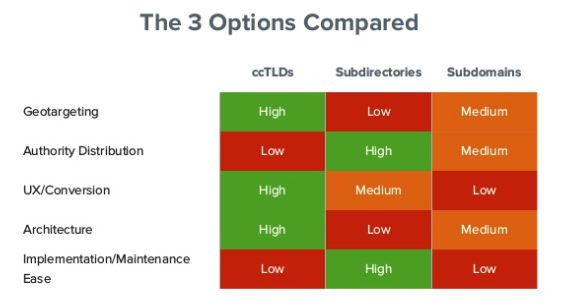
Whichever option you choose, I would always recommend that you maintain separate URLs for the content on your site that you’d like to target at different countries or languages. Using cookies to show translated or localised versions based on IP addresses is often problematic and usually results in URLs with added international parameters which causes duplicate content issues.
Your decision on how to structure your URLs depends entirely on your business requirements and capability. While you won’t see any major negative impacts on your optimisation efforts, purely as a result of their URL structure, you can certainly cost your business a lot of time and money if you choose the wrong structure.
5. Best practice HTML
Building a website designed to rank well internationally means taking advantage of the full array of technical wizardry offered by the language websites are built in, the HTML.
The following attributes contribute technical granularity to your site, which could give it the competitive advantage it needs to rank more highly than other local and international players.
5.1 HrefLang tags
HrefLang is a HTML tag that goes within the section of a web pages’ source code, which helps Google crawlers understand that certain pages, and folders on a website are targeted at a specified country. It is a fundamental part of international SEO and a part of SEO many sites get wrong.
To avoid duplicate content issues, you will need to use the rel=”alternate” (Hreflang) tag so that Google understands that various English language versions of your site are alternate versions used to target different locations, rather than duplicates.
To do this, you’ll need to place a HTML link element in the header of each page of each version of your site you create.
For example, if you had a site to target users in the UK, and chose to use a subdirectory to target users in the US, you’d need to add the following code in the HTML <head> section of the UK site:
<link rel=”alternate” hreflang=”en-us” href=” https://www.example.com/us” />
In this example, you would have specific URLs for English speakers in the UK (en-gb) as well as the USA (en-us), but you may want all other (location unspecified) English speakers to see your generic English (en) (UK) site. In this case, you should specify the generic English-language (en) page for searchers, which could well be the UK version of the site.
To annotate this cluster of pages using HTML link tags in the <head> of each page, you’d need to use the following snippet of code:
<link rel=”alternate” href=”https://www.example.com/” hreflang=”en-gb” />
<link rel=”alternate” href=”https://www.example.com/us” hreflang=”en-us” />
<link rel=”alternate” href=”https://www.example.com/” hreflang=”en” />
Don’t be overwhelmed by the different types of HrefLang there are tools such as the HrefLang tag generator that can help you create and structure you HrefLang tags.
5.2. The X default tag
The xdefault tag is a default version of the site that you can choose to serve people when the language or location tag doesn’t match any of the available ones. For example, you may have a UK or US version of your site but when someone from Canada searches for related terms you xdefault them to a preferred version.
In practice this looks like:
<link rel=”alternate” href=”http://example.com/en-gb” hreflang=”en-US” /> (For English speakers in the US)
<link rel=”alternate” href=”http://example.com/en-us” hreflang=”en-GB” /> (For English speakers in the UK)
<link rel=”alternate” href=”http://example.com/” hreflang=”x-default” /> (For English speakers in other countries that may be looking for relevant terms for which there is no specific site set up to target their country)
5.3. Content-language tags
Although not all search engines pay attention to the content-language meta tag, others still use it to determine the location of your pages – in other words, which country they should be indexed in. For example, Bing recommends the use of the “content-language” meta tag to embed the location of each page in the <head> section of those files. An example of a meta content-language tag can be seen below:
<meta http-equiv=”content-language” content=”en-us”>
Not as important for international SEO as HrefLang tags, they are still something worth considering when building your international SEO strategy.
5.4. Schema markup
Schema markup is some additional code that you add to your website to help the search engines to better understand your content, and to give more informative results for search users.
Schema markup is added to a wide variety of types of content, for example to give additional information about events, products for sale, and most importantly from an international perspective, you can add local business office information.
You can add specific organisation and LocalBusiness Markup that will give search engines an idea of where your business operates, the address and phone number, social profiles of your business etc. So it is essential to add it to your international web pages.
You can add schema mark up to a range of types of content on your website. Google loves structured data, and it is no different when it comes to international SEO.
Refer to our guide to adding schema markup to your site.
6. International keyword research
The first step in generating international content is to undertake keyword research with the help of a native speaker for each of your target languages. However, it is important that the initial keyword research is carried out in English (or your own native language) prior to it being translated and localised. You will almost always find that the direct keyword translation is never the phrase that is most relevant to your content. With this in mind, you should use professional translation services to translate any keyword research carried out, before going back and carrying out fresh keyword research in your target language, and professionally translating the resulting content.
Remember that Google, Baidu, Yandex and Bing each have their own keyword planning tools that will give you search volumes:
Once you’ve seen search volumes and competition, select the best keywords and keyword themes for your pages. Here’s a really handy guide by Ahrefs on how to do this as well as a helpful SEO checklist.
7. Localisation of your content
Localisation is the process of adapting content that has been previously translated into different languages to a specific country or region. For example, people in the US and UK predominantly speak English, however you wouldn’t catch anyone in the UK referring to their trousers as “pants“. Understanding that words have different meanings across different countries and regions, despite those countries using the same language is key to your content being understood by your target customers. Not getting the tone of voice or idioms right will harm your international SEO efforts.
When developing a multilingual or multiregional website, you’ll need to ensure that you localise the following content:
- URLs
- Title
- Meta Description
- Navigation
- Headings
- Text
- Images
- Currency
- Address
- Phone number
- Time
It’s important that once you’ve done this, you get it checked by a native language speaker prior to the website going live. If you don’t have direct access to a native language speaker, or you just want to double-check something specifically, you should take a look at a forum called word reference.
8. Geo-targeting
There are a number of ways to target your site to specific countries, which includes the following:
- Website Structure
- Using local IP addresses
- Google Search Console
If you decide to use either subdomains or subdirectories to structure your International sites, you’ll be able to target them at each chosen country using Google Search Console.
You’ll need to set up Analytics and Search Console properties for each version of the site. To target a website at the US market, you would set ‘United States’ as a geographic target in Google Search Console. This is essentially informing Google that you’d like this site to be served in the SERPs (search engine results pages) displayed by www.google.com (US).
The following image displays how you can set a particular country as a Geographic target in Google Search Console:
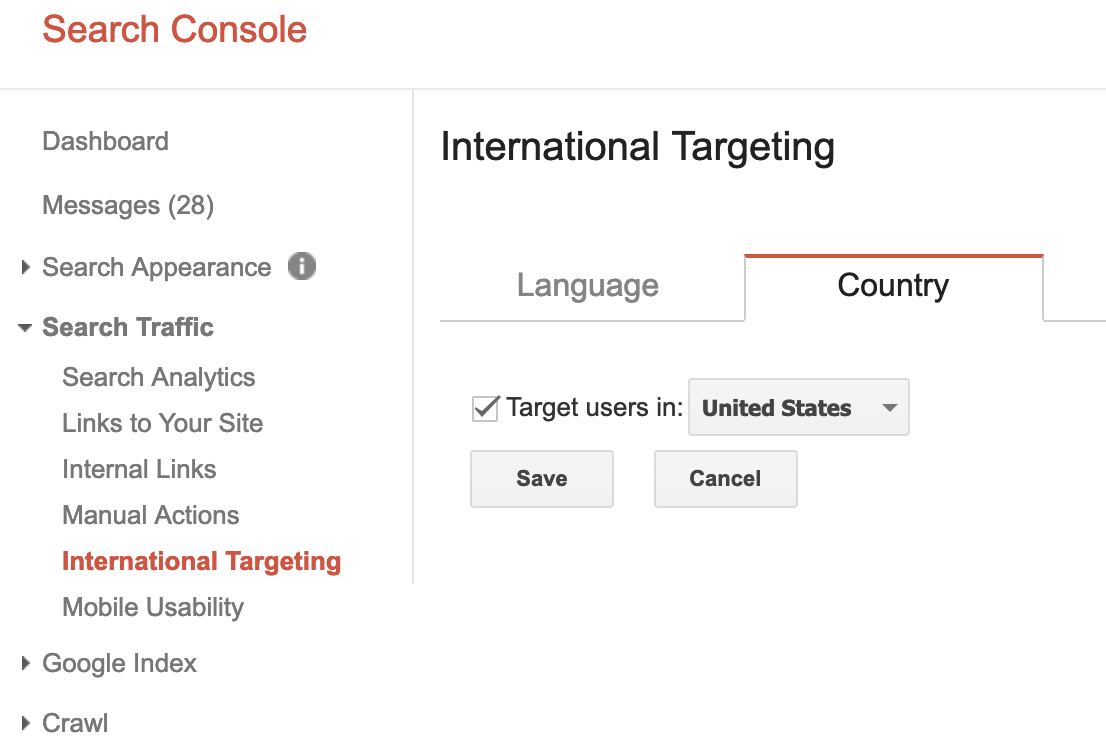
9. Creating an international link building strategy
Building links to your international content can be a challenge when you take the following into consideration:
- The link building skills of your international competitors can be better developed than your own
- Link sources are different
- Different languages and dialects
- Consumer profiles, trends and behaviours are often different to domestic markets
International link building is essential to your international SEO strategy and therefore cannot be ignored. The good news is that there are various tools and techniques to help you and your business overcome these challenges when it comes to obtaining international links.
9.1 Identify and leverage existing international backlinks
If your business already serves multiple international territories, there is a good chance that you may have some high quality, territory-specific links pointing to your domain. However, for effective international SEO, these links should be pointing to territory-specific content. For example, links from French websites could be pointing to UK English content.
For some quick-wins, run a backlink report of your domain using tools such as SEMRush, Ahrefs or Screaming Frog SEO Spider (which is free up to 500 URLs) and identify any external links that could be pointed to more territory-specific content on your domain.
Here we can see in Ahrefs each backlink and what language they are in.
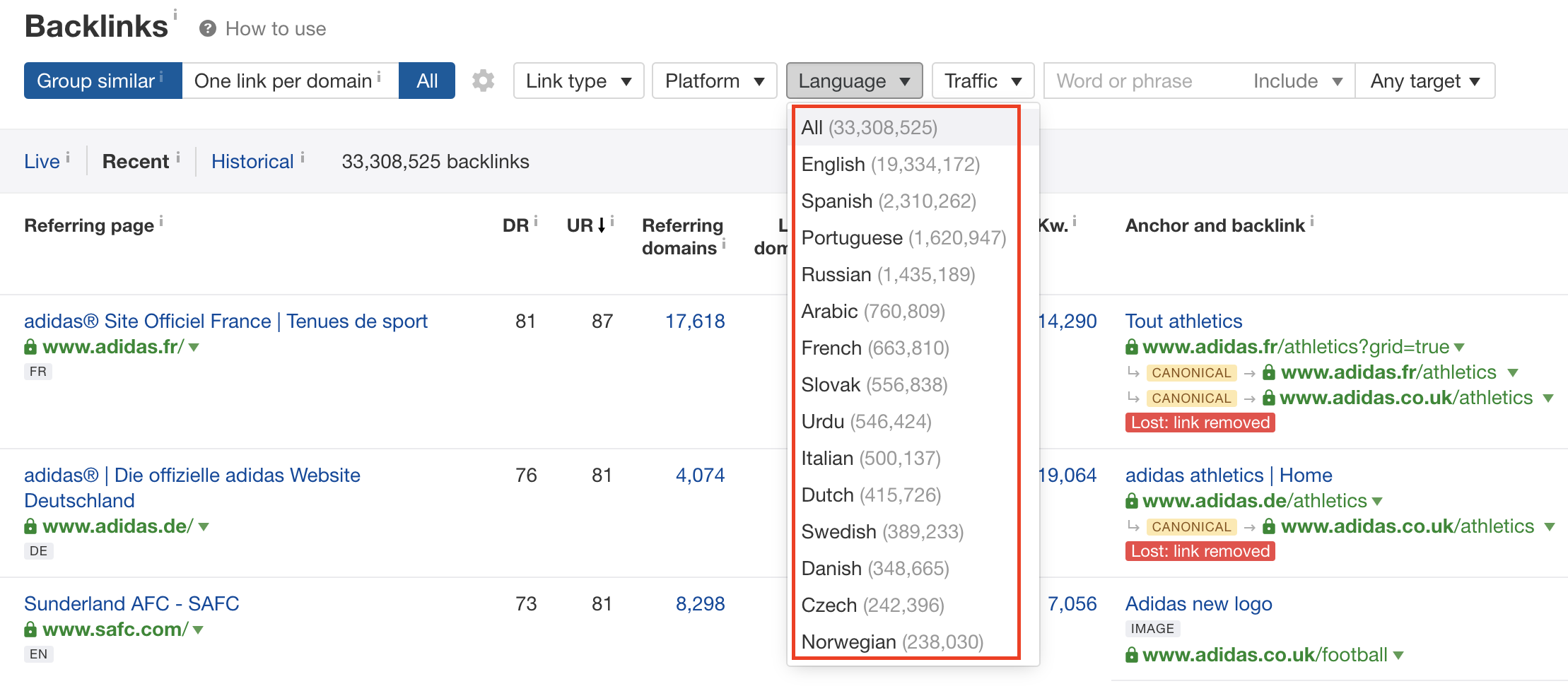
9.2 Research and learn from your international competitors
Researching your international competitors is one of the most important activities you will undertake to develop search visibility in new territories. You can learn a great deal from main competitors whether you’re new to a specific territory, or new to international SEO.
The Link Intersect tool in Ahrefs is great for understanding where your competitors are obtaining backlinks and where you are not.
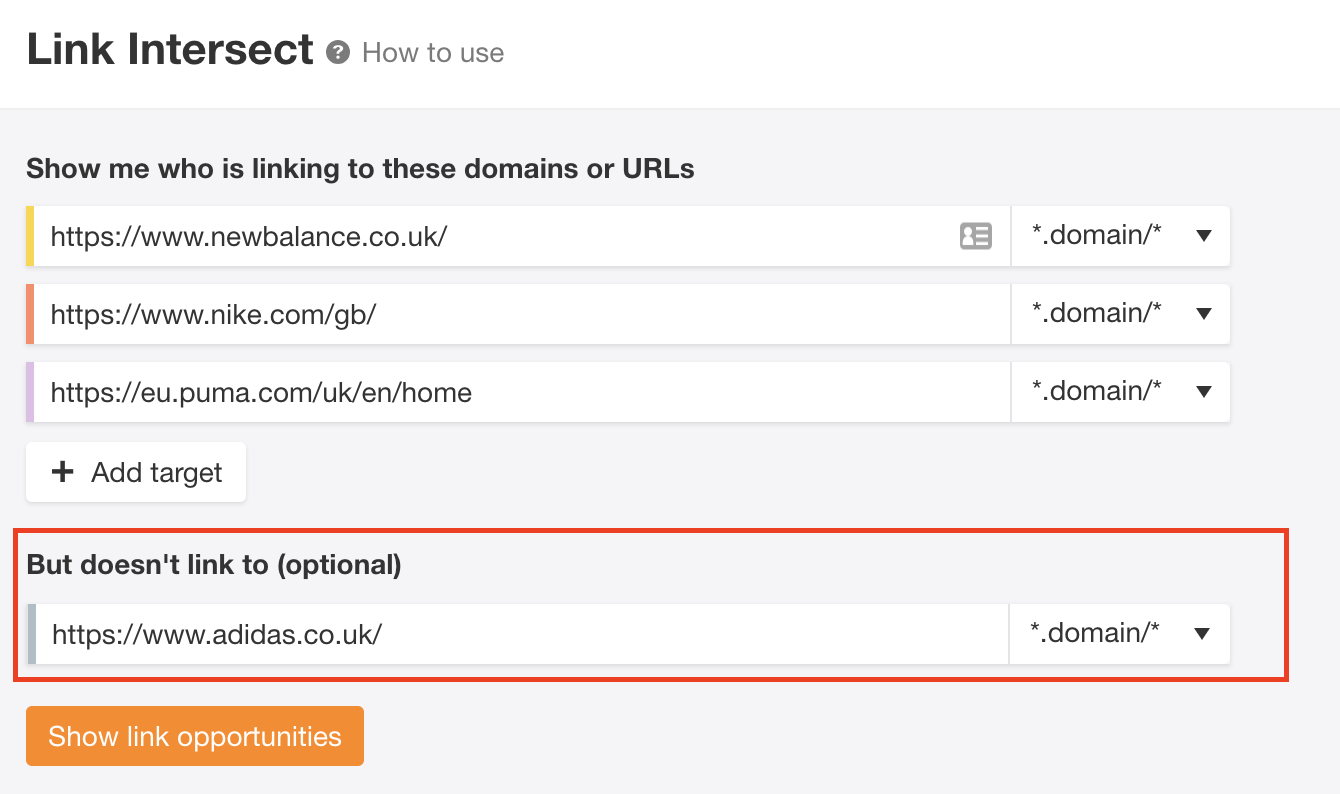
9.3 Don’t miss out on overseas mentions
Do you have Google Alerts set up to monitor brand mentions in target territories? Make sure that these are configured to pick up mentions of your brand, products and services in international territories. Picking up mentions in your target territories gives you another weapon in your international link building arsenal.
If you’re a larger company, it is wise to invest in a social listening software such as Sprout Social or Mention.

Considering how much hard work and money goes into international link building strategies and how crucial they are for your international SEO efforts, you don’t want to miss out on potential links because you aren’t picking up brand mentions effectively.
9.4 Earn links with local content
Great content lies at the heart of a successful link building strategy. While you can localise universally suitable product and service pages for foreign markets, creating link-earning content for different territories requires a greater degree of planning, research and strategy. One size doesn’t fit all, so one specific blog won’t necessarily appeal to multiple territories. The bottom line is that if you want to create content that’s worth reading, sharing and linking back to from other international influencers and websites, you need to go beyond simply translating English content.
If you don’t have the dedicated resource to produce content in the local lingo, I would recommend enlisting help from native speakers and writers. Again, Google Translate simply won’t be enough.
With regards to fuelling new ideas for international content, tools such as Ahrefs and SEMrush will both provide comprehensive competitor research on top linked content. Meanwhile, Buzzsumo will allow you to search by competitor domain or topic and will return with top pieces of content by filtered territory.
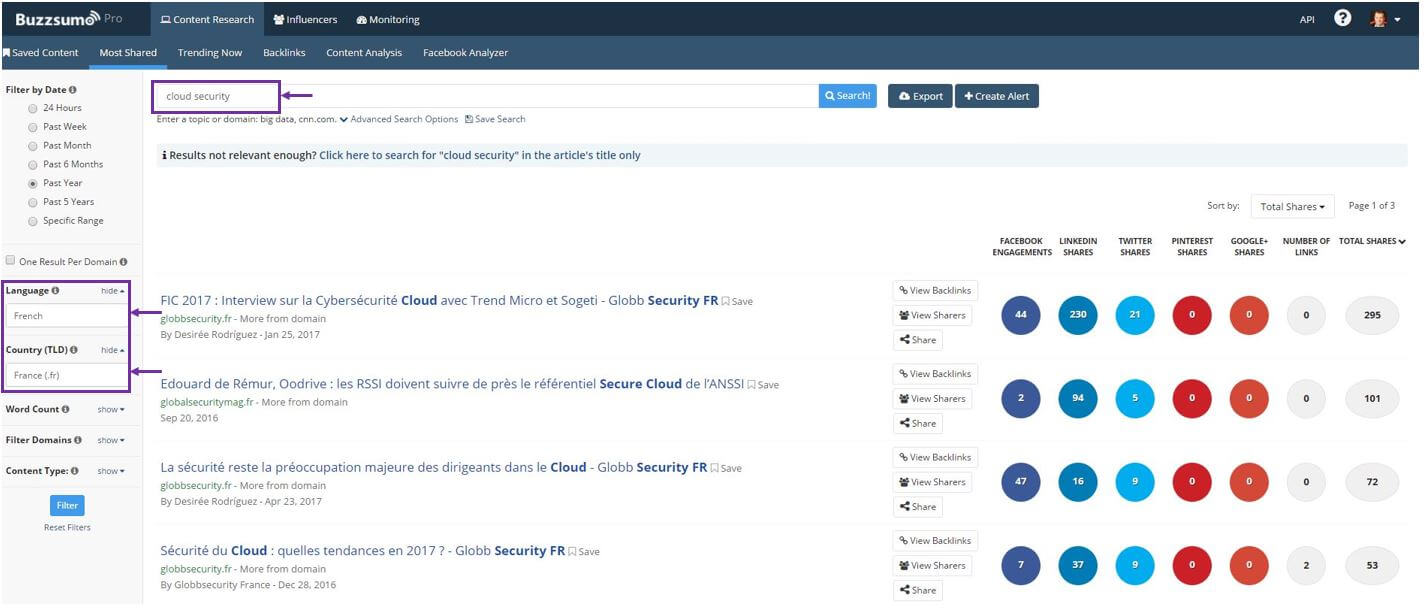
9.5 Identify international influencers
Your competitor research will help you a great deal with identifying international link building opportunities, but it’s important to fill the gaps and identify online influencers within international territories that are going to help promote your content.
If you want to find influencers, bloggers and journalists within particular international territories, Buzzsumo is a good place to start. Buzzsumo’s influencers tool will allow you to search for top influencers based on your keyword or topic. From there, you can filter by location for a specific list and save them to a personalised outreach list.
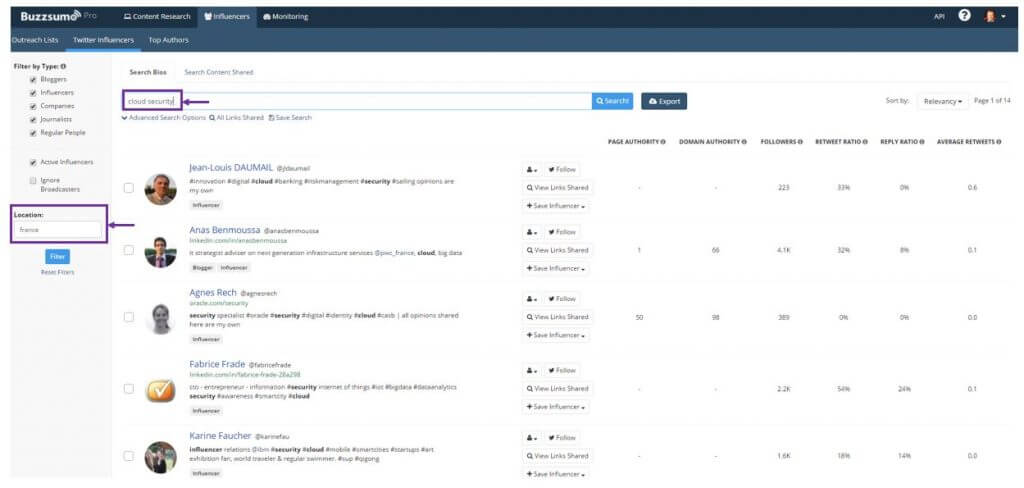
9.6 Being present in your international territory
Much like successful local SEO campaigns, you can give yourself a better chance of winning the battle for links if you’re actually present in these territories. If your business wants to crack a new international market online, there’s plenty of local activity to get involved in, such as:
- Local events – Communicate with locals in person and build relationships with customers and influencers. Make your business known
- Social media – As mentioned previously, become active on social media networks through dedicated international profiles. Also, be aware of popular networks specific to certain territories. For example, most Xing users are based in Germany
- Trade shows – Promote your business and build your reputation at international trade shows, many of which will offer links for a profile page and guest blogs
- Sponsorship – Build your brand and presence with sponsorship. Local sports teams are a good place to start because they can be affordable
- Suppliers – If you already have international suppliers, this is a good opportunity to source a link from them.
- Awards – Once you’ve gathered some traction, put your business up for international awards. Many awarding bodies do offer links in return
- Directories – If your business has a physical location within a specific territory, be sure to create Google My Business pages and list the business within quality local online directories. BrightLocal has written several blogs on top citation sources, such as this one for German citations
Creating content that is relevant and valuable is essential for earning quality local links and driving your international SEO strategy. It’s also critical to learn from established competitors to arm yourself with opportunities. This comes with embracing local communities, so be sure to maintain an active presence.
10. Leverage international social advertising
To give your internationally targeted content a boost, I highly recommend that you take advantage of paid social advertising on Twitter, Facebook and LinkedIn. If you’re relatively new to a specific country or international territory, your social media authority may not be strong enough to reach audiences and key influencers organically. This is where sponsored posts can help.
LinkedIn, Twitter and Facebook each have Geo-targeting functionality. This will allow you to run sponsored posts to audiences in specific countries or territories. By leveraging paid social, you’re giving yourself an opportunity to boost content to wider, location-specific audiences and earn natural high-quality links.
However, make sure that the content you are promoting adds value to the audience and your industry. This will give you a better chance of gathering traction and engagement.
And finally, testing and tracking
At this stage you should be celebrating the fact you’ve built a robust international website, you’ve got great content, and you are getting traffic.
The final step is to measure each of your international web properties independently from the rankings for each country and language to the visits and conversions.
To check that the technical aspects discussed in this article are being understood by the search engines, it is important that you check your Google Search Console data following the launch of each site. You can use the ‘International targeting‘ section to assess whether there are any issues with your HrefLang markup.
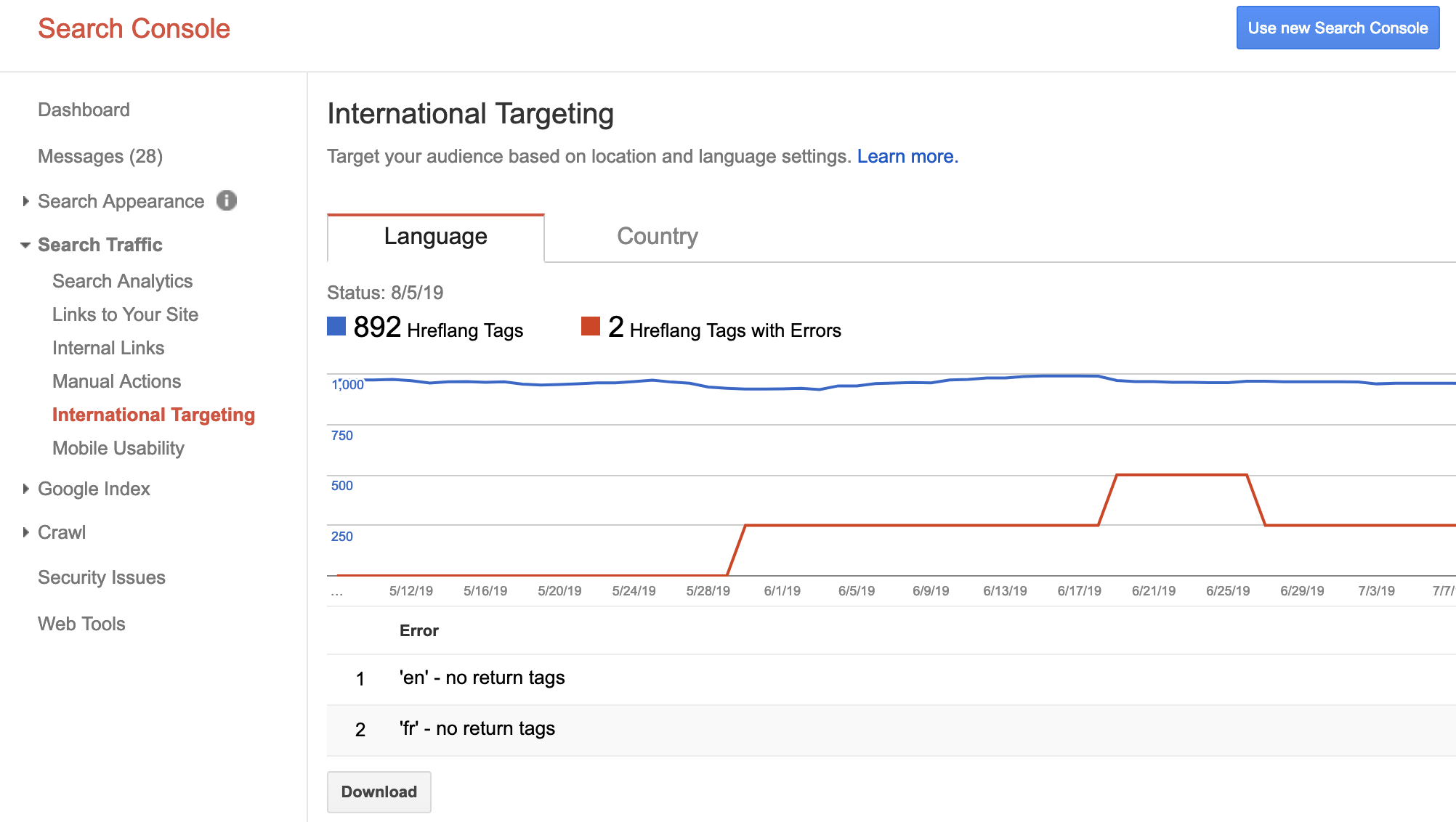
Roundup
We hope you enjoyed reading our International SEO checklist as much as we enjoyed writing it. Remember the 10 steps you should take when developing and optimising a website to target international territories and visitors:
- Researching potential markets
- International trade logistics
- Your website targeting strategy
- Defining your website structure
- Best practice HTML
- International keyword research
- Localising your content
- Geo-targeting
- International link building
- Leveraging international social advertising
Have you found this guide useful?
Team Hallam has years of experience building international websites, and delivering international campaigns.
Take a look at our case studies.

